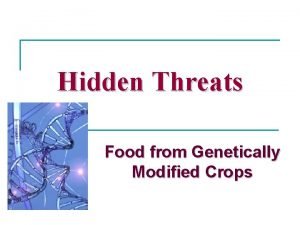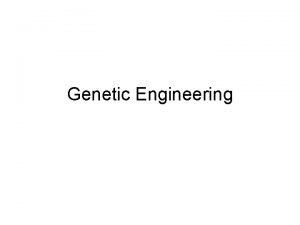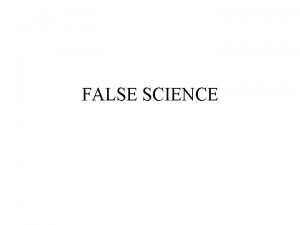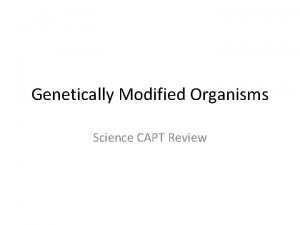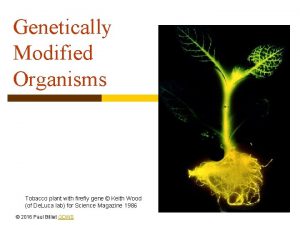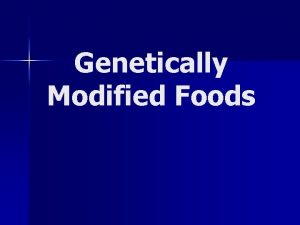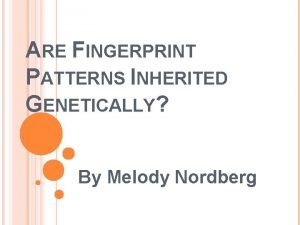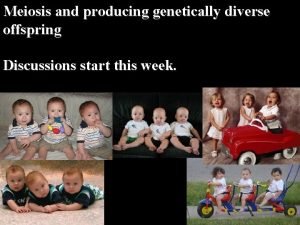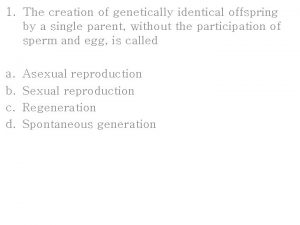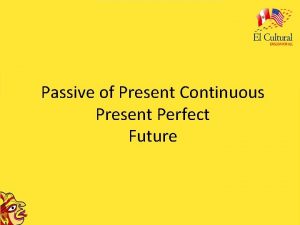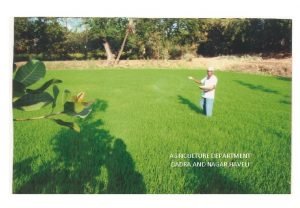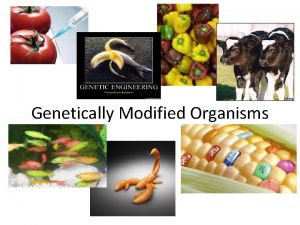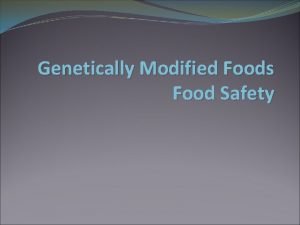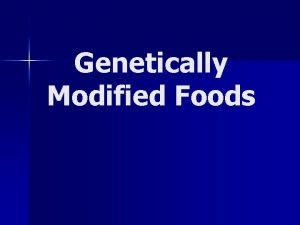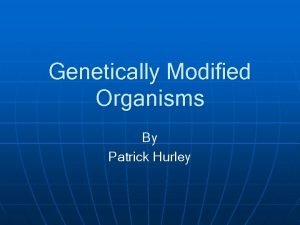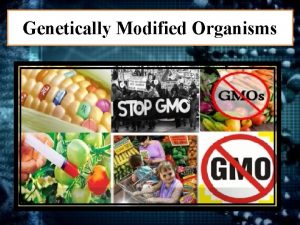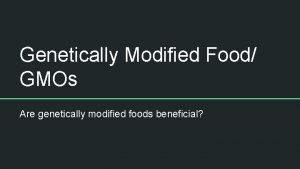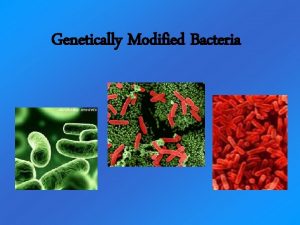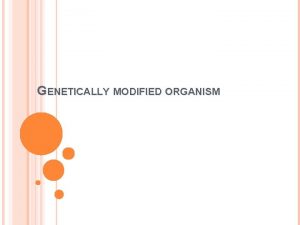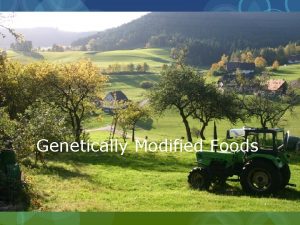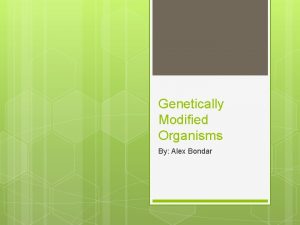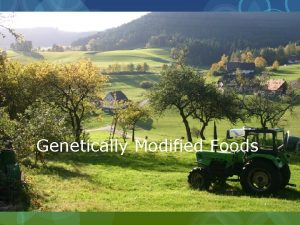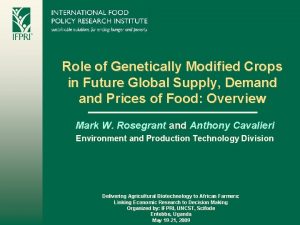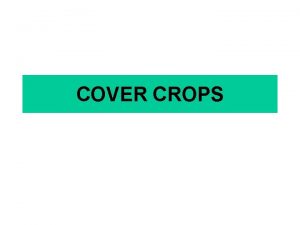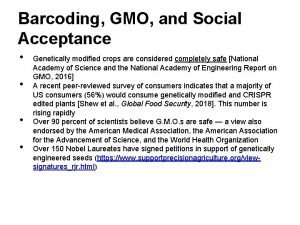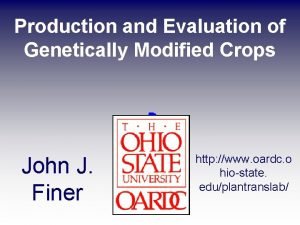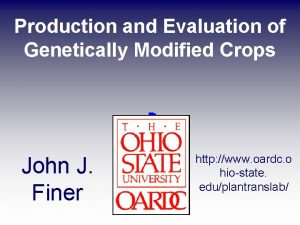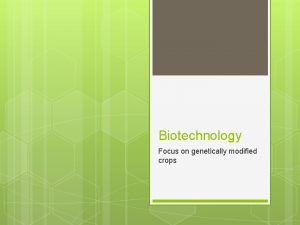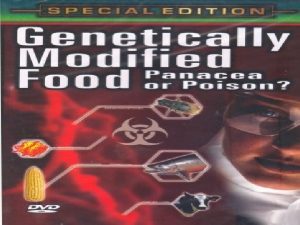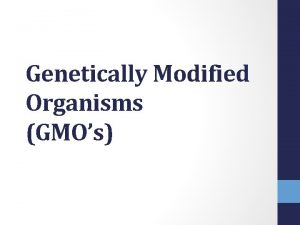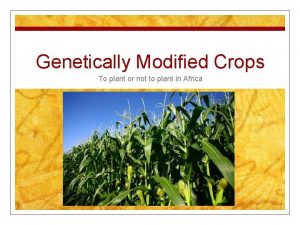Genetically Modified Crops Present and Future Section 4




























- Slides: 28

Genetically Modified Crops: Present and Future (Section 4 Unit 4) Adapted from a presentation prepared by Iain Caldwell Nova Scotia Agricultural College Truro, N. S. , Canada Presented at: “Genetically Modified Foods and Our Health” AKCSE and AKCSE Toronto Chapter Toronto Korean Canadian Culture Center Toronto, Ontario April 29, 2000 Adapted by wsolo 05 -5 -24

Learning objective • Define the following terms GMO PNT--plants with novel traits. • Name three main methods for producing GMO’s • Explain three reasons for creating GMO’s. • List and briefly explain six application of GMO’s in plant systems and 2 two in animal systems • Explain five reasons for now using GMO’s • List responsible ways of using GMO’s to minimize possible negative impact.

What is a GMO? L 1 -1: Define the following terms: GMO Genetically Modified Organism “Any organism whose genetic information has been altered by any technique including natural processes, mutagenesis, genetic engineering or others” -Canadian Food Inspection Agency


Technology involved L 2: Name three mainmethods for producing GMO’s v. Inserting genes through bacteria Ø Agrobacterium tumefaciens used by Monsanto™ v. Directly into plant protoplasts Ø Removal of cell wall and adding thick polymers v. Micro-injection Ø Break easily and clog frequently v. DNA Particle Gun


Agrobacterium Transformation – Engineering the bacterium Agrobacterium tumefaciens Isolated Ti plasmid DNA Coat Protein Gene Plant Viruses Engineered Ti plasmid with viral coat protein gene Recombinant plasmid returned to Agrobacterium

Agrobacterium Transformation – Plant Transformation Agrobacterium infects plant cells. Protein gene is transferred into cell chromosome. Plant tissue is cultured to produce transformed plantlets with each cell containing transgene. Generated plant will express resistance if infected with virus.

Transfer of T-DNA from Agrobacterium to plant cell Agrobacterium wound Plant cell D TA N Nucleus pore Single-stranded copy of T-DNA (protected by ss. DNA binding protein) T-DNA Chromatin

Why create GMOs? L 3 -Explain three reasons for creating GMO’s v. Much faster than traditional breeding methods Ø Can do in 1 year what would normally take 12 years v. Wider variety of genes to choose from Ø Using biodiversity in the service of social and economic development Ø Using the natural abilities of other plants and animals v. Adds precision and specificity


Uses of GMO’s Plants v. Replacement of pesticides v. Allow growth in adverse conditions v. Increased yield of desired product v. Alter nutritional value v. Medical applications v. Industrial applications • List and briefly explain six application of GMO’s in plant systems and 2 two in animal systems



Uses of GMO’s Replacement of pesticides v. Using nature Ø More than 2000 plants and 700 bacteria and fungi with insecticidal and fungicidal activity (Paoletti and Pimenial, 1996) v. Roundup™ ready corn, soybeans, etc. Ø Only need to spray once a season not 2 or 3 times.

Roundup Ready Soybeans

Uses of GMO’s Replacement of pesticides v B. t. k-engineered crops Ø Bacillus thuringiensis var. kurstkai HD-1 3 A 3 B Ø Strain specific to Lepidoptera -delta endotoxin crystal Ø Digested harmlessly in human body Ø Have been spraying directly since 1979 (ex. Dipel™) Ø 1996 in U. S. § 20% of cotton § 10% of corn § 2 -3% of potatoes Spraying B. t. k. Spruce budworm

Uses of GMO=s Increased yield of desired product v. Altering plant size, shape, or time until maturity to increase yield of individual plants Ø Development of perennial grain crops would also reduce tillage and improve sustainability. v. May be part of a solution to the impending population explosion Ø Demand for food is expected to double by 2025 and triple by 2050 (Vasil, 1998).

Uses of GMO=s Alter nutritional value v. Golden rice Ø Almost 1/4 billion children suffer from a lack of vitamin A resulting in decreased immunity and blindness (A golden bowl of rice, 1999) Ø New rice strain makes the grain produce beta carotene using genes from daffodil and Erwinia Ø Another strain contains a greater proportion of iron to almost 400 million women suffer from anemia due to iron deficiency (Conway and Toenniessen, 1999)

Uses of GMO’s Allow growth in adverse conditions v. Crops can be planted in areas previously unsuitable - important for 3 rd World v. Withstand drought and high salinity Ø Vastly increase useable land v. Survive in low nutrient soil Ø Genes introduced to attract nitrogen fixers decrease fertilizer usage

Uses of GMO’s Medical applications v. Edible vaccines Ø Hepatitus B (liver failure and cancer) vaccine in bananas Ø No cold storage needed v. Nutriceuticals Ø Medicine within food Ø In 1996 5% of the food market in Japan and $9 billion in USA (EECCO, 2000) v. Pharmaceutical and diagnostic proteins

Uses of GMO=s Industrial applications v. Industrial polymers Ø Silk producing genes from spiders and Trichoptera into plants v. Fuels Ø Replacing non-renewable mineral oils with renewable vegetable oils given similar qualities v. Environmentally appealing Ø Sustainability

Uses of GMO=s Animals v. Cloning Ø Meat production Ø Creation of embryo banks to maintain genetic diversity Ø Propagation of desired traits Ø Breeding of endangered species v. Increased production Ø BGH and BST in cattle to increase milk production. L 4: List and briefly explain six application of GMO’s 2 two in animal systems

Concerns v. Idea of playing God v. Insect and pest resistance Ø Common pesticides will stop working or reducing of markets and deregistration v. Impact on non-target organisms Ø Flora and fauna v. Consumption of toxins Ø Will genes and protoxins be digested? v. Possibility of outbreak –”superweeds” Ø Crossing with wild types L 5 -Explain five reasons for not using GMO’s

Preventative measures v. High dose/ refuge strategy Ø Possibility for resistance build-up less likely v. Planting non-GM crops around fields Ø Pollen grains less likely to mix with wild species Ø Allows for grazing by non-target organisms v. Removal of non-target food sources Ø Milkweed plants removed from areas around fields to limit impact on butterfly population v. Rigorous review process Ø Each product tested in small-scale field trials and screened for toxins before marketable L 6: List responsible ways of using GMO’s to minimize possible negative impact.

Future outlook v. GMO’s must be analysed individually and not referred to as one product. v. International and regional management plans involving a public dialog process. v. Further research on effects to non-target organisms and long-term effects v. Labelling of all products coupled with education to allow for informed consumer decisions

SOURCE: Newsweek, March 1997

Questions? Roundup Ready. J soybeans
 Gmos advantages and disadvantages
Gmos advantages and disadvantages Kayla antoniou
Kayla antoniou Genetically modified crops have
Genetically modified crops have Genetically modified crops have
Genetically modified crops have Genetically modified crops have
Genetically modified crops have Genetically modified organisms
Genetically modified organisms Genetically modified organisms
Genetically modified organisms Tobacco plant expressing firefly gene
Tobacco plant expressing firefly gene Genetically modified food
Genetically modified food Future simple future continuous future perfect
Future simple future continuous future perfect Future continuous and future perfect
Future continuous and future perfect Chapter 22 genetics and genetically linked diseases
Chapter 22 genetics and genetically linked diseases Are fingerprints inherited
Are fingerprints inherited Diverse offspring
Diverse offspring The creation of genetically identical offspring
The creation of genetically identical offspring Present simple and present continuous future
Present simple and present continuous future Future simple continuous
Future simple continuous Present simple present continuous past simple future simple
Present simple present continuous past simple future simple Present simple past simple future simple present continuous
Present simple past simple future simple present continuous Passive for present perfect
Passive for present perfect Passive voice of present perfect continuous
Passive voice of present perfect continuous Simple past simple present will future
Simple past simple present will future Eat in present simple
Eat in present simple Dadra and nagar haveli crops
Dadra and nagar haveli crops Early scarlet globe radish scientific name
Early scarlet globe radish scientific name The jumano built villages and grew crops near the
The jumano built villages and grew crops near the Present simple present continuous and present perfect
Present simple present continuous and present perfect Future perfect and future continuous examples
Future perfect and future continuous examples Tenses in english
Tenses in english


